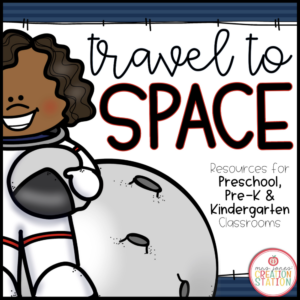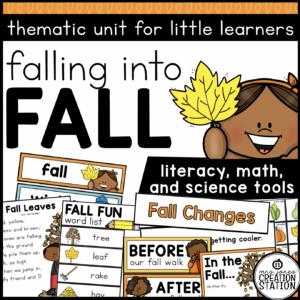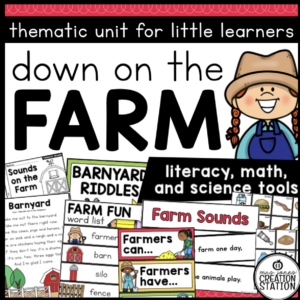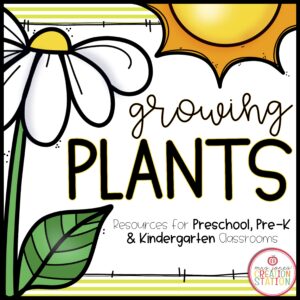Menu
SCARECROW UNIT FOR PRESCHOOL, PRE-K AND KINDERGARTEN
This resources includes thematic lessons, activities, poems, songs and centers for your little learners.
Buy the BUNDLE and SAVE! You can purchase this resources in the Thematic Activities for Little Learners Bundle and the Little Learners Mega-Bundle!
THIS RESOURCE WILL INLCUDE
Week 6 Plans
This is a template for lesson plans during scarecrow week of school. Pick and choose what ideas and resources work for your learners.
Scarecrow – Whole Group
These resources can be used during whole group instruction for a scarecrow theme. They include a poem, word cards, tracing page and table sign in sheets.
Scarecrow Interactive Poem
Use this poem during a thematic lesson, whole group or a literacy center and have learners change the scarecrow’s feelings.
Scarecrow Thematic Plans
Use these plans as a guide for engaging scarecrow read alouds and activities in the classroom. There are also fables listed that correlate with each read aloud.
Appearances Can Be Deceiving
Read Lonely Scarecrow and complete the Scarecrow and Snowman chart together. Have learners complete the writing page or simply discuss.
Find Joy in the Ordinary
Read Scarecrow and have draw or write something in their everyday life that brings them joy. Use the word/title cards to create a chart to display their work.
Little By Little Does the Trick
Read The Scarecrow’s Hat and retell the story using the sequencing pockets. Have learners glue the title and pockets on a strip of manilla paper or a sentence strip. Learners may flip the first and then flap and move the objects to retell the story.
Everyone is Important
Read The Scarecrow’s Dance and have learners write about how someone in their life is important to them. Create the scarecrow craft and glue on writing for a hallway display.
Treat Other the Way You Want to Be Treated
Read Otis and the Scarecrow and have learners write or draw 3 ways they can be nice to others and complete the “Crow” some Kindness book. (glue in an interactive notebook)
Farm Sensory Charts
Explore scarecrows with the five senses. Complete the charts together and have learners draw and write about what a scarecrow would experience using their senses on the interactive page.
Scarecrow Predictable Chart Class Book
Use this resource to create a class book from the predictable chart created during the week.
Literacy Center | Rhyming Crows
Have learners match the crows by the rhyming pictures.
Literacy Center | Kernel Alphabet Letters
Have learners use corn kernels to form the letters and then trace with a marker.
Literacy Center | Beginning Sound Pocket Chart
Have learners match the letter to the correct beginning sound. (Aa-Ll)
Math Center | Kernel Numbers
Have learners form and count the numbers with corn kernels.
Math Center | Number Order
Have learners put the crown in order on a pocket chart. Learners may count up or count down.
Math Center | Subitize Write the Room
Have learners find the cards around the room and write the correct number.
BONUS Resource
Complete the shape scarecrow for a fun math activity!
WEBSITE | FACEBOOK | INSTAGRAM | PINTEREST | TEACHERS PAY TEACHERS
© Mrs. Jones’ Creation Station, Inc
How can I see what is new in the MJCS store?
Be the first to know about new discounts, freebies, and new products. You can also subscribe to our newsletter to receive access to resources only available to MJCS subscribers, as well as, special offers and ideas!
How can I get credit for my TpT purchases?
Go to your account button at the top of the page. Under the “Buy” section, click “My Purchases “. Beside each purchase you’ll see a Provide Feedback button. Simply click the button and you will be taken to a page where you can give a quick rating and leave a comment for the product. Each time you give feedback, TpT gives you feedback credits that you use to lower the cost of your future purchases. Please leave detailed feedback for each resource, so we are able to create better resources for teachers and students.
How can I find a certain activity in a large PDF file?
If the resource you purchase has a variety of activities compiled into one PDF find the table of contents and click on the activity title. This should take you to that specific activity in the resource.
What can I do if I have a question about a resource?
If you have any questions regarded a resource before purchasing please email me at mrsjonescreationstation[at]gmail.com. Once you have purchased the resource you may use the “Product Q and A” tab on the product page to ask a question, as well.
How do I know if a resource has been updated?
Go to your account button at the top of the page. Under the “Buy” section, click “My Purchases “. Choose to “sort by: recently updated” to see what resources have been updated since you downloaded them last. You can download any updates from there. If a file has been updated, you will see a notification under the resource that says “Newly Updated – Download for Free!”
This item is a paid product created by Mrs. Jones’ Creation Station, Inc. Copying any part of this product, redistributing, selling or placing it on the internet in any form is strictly forbidden and is a violation of the Digital Millennium Copyright Act (DMCA). Thank you for respecting our work!
YES, YOU CAN…
NO, YOU CAN’T…
Click here for a detailed post with step-by-step directions.
You will need to download fonts specified in the resource and install it on your computer before downloading the editable file.
Install the most recent version of Adobe Reader onto your computer. If you have any problems editing, viewing or printing a file make sure your Adobe Reader is updated.
Now you can download the file to your computer. Once the file has downloaded open in Adobe Reader. You should be able to view the editable fields and the text should match the product description. If you have any problems editing the file, make sure you have followed the directions above and then contact me at mrsjonescreationstation[at]gmail.com




